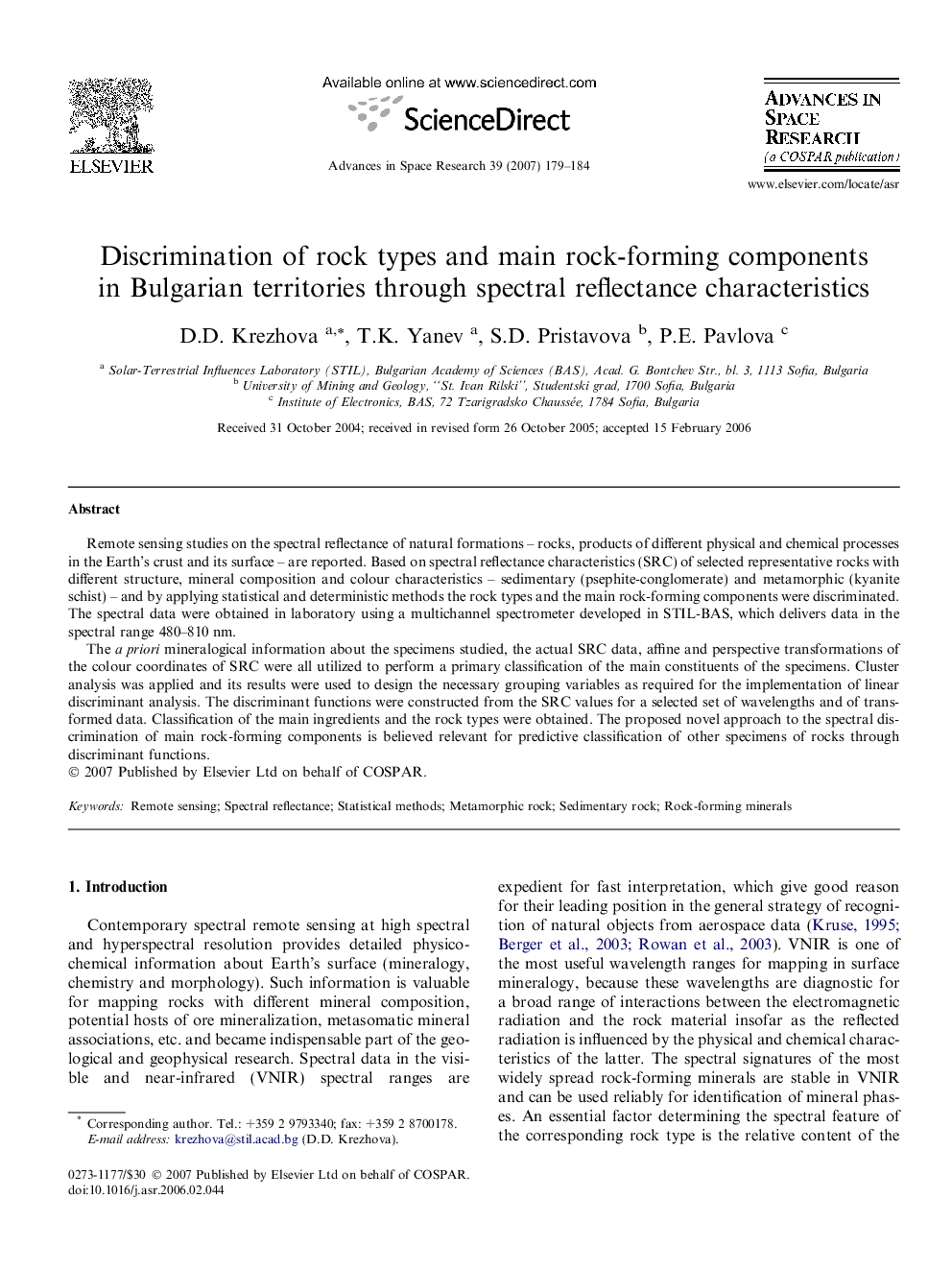| Article ID | Journal | Published Year | Pages | File Type |
|---|---|---|---|---|
| 1769186 | Advances in Space Research | 2007 | 6 Pages |
Abstract
The a priori mineralogical information about the specimens studied, the actual SRC data, affine and perspective transformations of the colour coordinates of SRC were all utilized to perform a primary classification of the main constituents of the specimens. Cluster analysis was applied and its results were used to design the necessary grouping variables as required for the implementation of linear discriminant analysis. The discriminant functions were constructed from the SRC values for a selected set of wavelengths and of transformed data. Classification of the main ingredients and the rock types were obtained. The proposed novel approach to the spectral discrimination of main rock-forming components is believed relevant for predictive classification of other specimens of rocks through discriminant functions.
Related Topics
Physical Sciences and Engineering
Earth and Planetary Sciences
Space and Planetary Science
Authors
D.D. Krezhova, T.K. Yanev, S.D. Pristavova, P.E. Pavlova,
